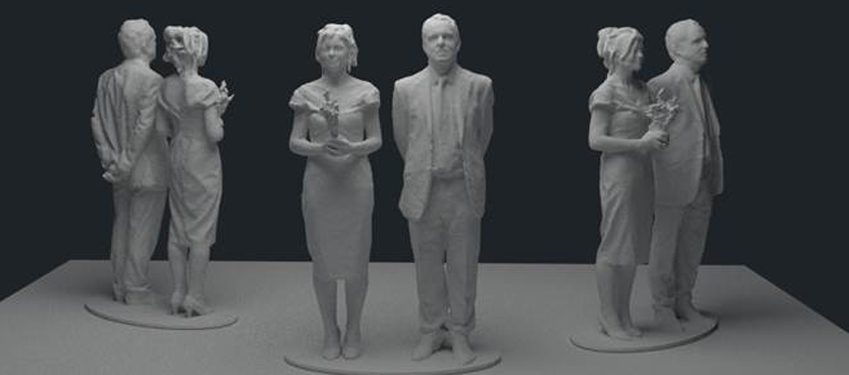by Steve Dey
It was October 2013, I finally had my 360 degree scanning turntable based on Fredini’s excellent design and driven by a high torque 3 rpm rotisserie motor. I had a Primesense Carmine 1.09 close range scanner which after months of disappointing results was working perfectly thanks to a driver upgrade. I had a new PC in which lurked a beast of a graphics card – the NVIDIA GeForrce GTX Titan (I do a lot of work with video and 3D graphics). I had the latest version of ReconstructMe 2.0.199 which I was convinced would deliver the most accurate models and the quickest workflow. To print the models I had a home-built original Ultimaker.
My 3D scan and print studio was open for business! So who to scan first? My young children would not stand on my turntable for more than 10 seconds, they were justifiably weary of being guinea pigs for tests and trails. My wife though supportive was not ready to see a mini version of herself. In my excitement to get the technology working I had not considered the implications of being confronted by a 360 degree model of oneself. As it turned out most men are not in the slightest bit bothered by this idea other than the odd query about 3D airbrushing a six-pack. Kids universally loved the idea of a mini version of themself. Women seemed to fall into two camps either, “scan-me-all-day I love it” or “do not even ask me to step on that turntable”.
After a dozen or so scan and prints I had worked out the workflow and ironed out most of the issues. I found memory issues sometimes as the close range scanner seemed to build huge models which sometimes would not fully export from ReconstructMe. I found by keeping the scan volume large enough and the distance of the scanner right I could avoid this problem. I beleive the ReconstructMe team are investigating this but I am getting good enough results for now. Another problem I had was with the security software BitDefender, after installing this software my PrimeSense and my backup Kinect scanner failed to work and not just with ReconstructMe so I switched to another security solution and all was fine.
Then one day a wedding invitation arrives from our good friends Carl and Emily and after a discussion about the arrangements someone came up with the idea of the 3D scan and printed wedding cake topper.
At first I tried scanning the couple together, the turntable is large enough to do this but I soon realized that there were too many scanning blind spots. So we scanned them individually and the results were good. Using Blender I cleaned up any defects and reunited the happy couple on a platform but then how should they be orientated face-to-face or side-by-side? I used Sketchfab to share the models online but the happy couple still could not decide so we printed a few versions.
On the wedding day the cake attracted a lot of attention, mobile phones and cameras were trained on the cake, lots of questions were asked. Emily and Carl were pleased to have something unique at their wedding and for most of their guests this was their first exposure to 3D scanning and printing. The attention it generated continued after the wedding day, I was interviewed by local newspapers and then I appeared in a national newspaper. Then I was on a local radio station explaining how 3D printing and scanning worked. Unsurprisingly I am getting requests for new models now but setting a price for these has proved difficult given the effort involved. I think plastic has an association with being cheap despite the fact that these models are unique. So I am investigating colour 3D printing to see if people would value this more.
for Emily and Carl



